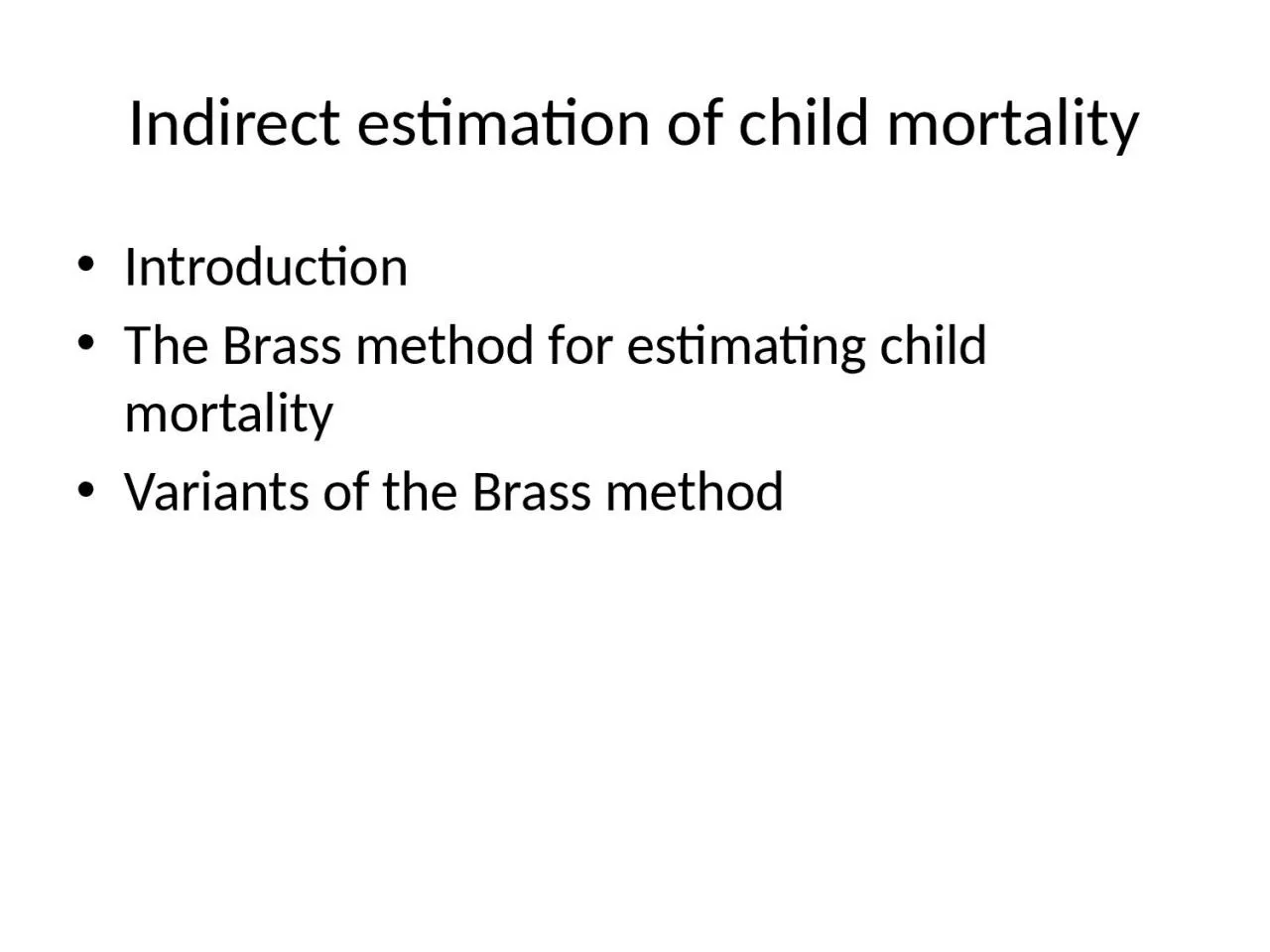

Introduction The Brass method for estimating child mortality Variants of the Brass method Indirect estimation methods Methods for evaluating data quality allow to correct the data Can calculate corrected mortality indicators based on adjusted data ID: 931335
Download Presentation The PPT/PDF document "Indirect estimation of child mortality" is the property of its rightful owner. Permission is granted to download and print the materials on this web site for personal, non-commercial use only, and to display it on your personal computer provided you do not modify the materials and that you retain all copyright notices contained in the materials. By downloading content from our website, you accept the terms of this agreement.
Slide1
Indirect estimation of child mortality
Introduction
The Brass method for estimating child mortality
Variants of the Brass method
Slide2Indirect estimation methods
Methods
for evaluating data quality
allow to correct the data
Can calculate corrected mortality indicators based on adjusted data
Sometimes it is not possible to apply these methods, because data not available or difficult to correct
Indirect methods: use of alternative sources of information
Slide3Indirect estimation methods
Child mortality
Adult mortality
Child mortality methods work better than adult mortality methods
Focus here on child
mortality
Slide4Birth histories
Birth histories
Sample of women aged 15-50, interviewed in a survey
Asked to report:
Date of birth for each live birth
Current survival status of each live birth (alive/dead)
If dead, date of death
Available in
DHS
Specific methods for analyzing birth histories
Slide5Summary birth histories
“Brass” method
Women aged 15+ asked:
How many children ever born
How many children still surviving
No question on dates of birth and death
Available in:
Censuses
Sample surveys (DHS, MICS)
Slide6Summary birth histories
Age of mother taken as indicator of how long ago births occurred
Births among women aged 20-24 occurred more recently, on average, than births to women aged 40-44
Produces estimates of q(1), q(2), q(3), q(5) and q(10)
Can be used with model life tables to estimate
trends in q(5)
Slide7Illustration
Assume following life table in the population:
Slide8Illustration
Assume all childbearing takes place at exact age 19.5:
Slide9Illustration
Now assume that fertility is more spread out in age
Proportion children dead for women aged 25.0 (d
25
) and its correspondence with death probability:
Slide10Illustration
Now assume that past births are evenly distributed for these women:
d
25
= 30.6/200 = .153 = q(2.3)
Slide11Logic of method
Proportion of dead children reported by women aged
x
is affected by both the level of mortality
and
the time distribution of past births
The Brass method converts proportion of reported children dead into death probabilities after correcting for distributional effect
Calculation of correction factors (k) based on reported age pattern of fertility
Estimation of reference date for each death probability
Slide12Slide13Slide14Slide15Biases
Less potential for reporting
errors than full birth histories,
because no dates or ages are asked about children
Still potential for omission, age misreporting of mothers
Assumption that fertility has been
constant in the past
q(1) usually too high (based on reports from women aged 15-19 – many first births with high mortality)
Issues of
representativity
, selective mortality
Slide16Variants of Brass method
By duration of marriage
Births last 12 months
Most recent birth
Preceding birth